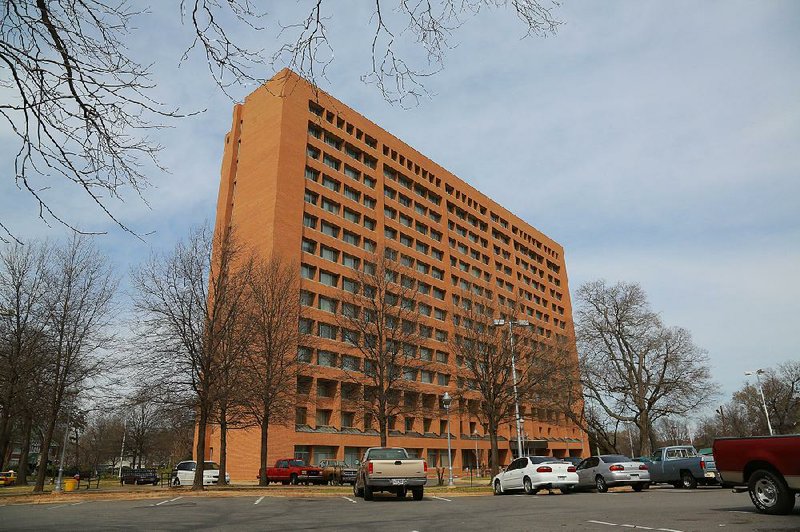The Arkansas Historic Preservation Review Board denied a proposal to place three Little Rock public housing buildings on the National Register of Historic Places, the federal government's official list of buildings and sites worthy of preservation.
The nomination of the Fred W. Parris Towers, Cumberland Towers and Jesse Powell Towers -- all built in the early 1970s -- was denied unanimously by state board members, who felt the buildings did not play a significant enough role in Little Rock's history to warrant the distinction.
The listing would have made the Metropolitan Housing Alliance, the public housing agency that owns the towers, eligible for up to $11 million in state or federal tax credits, which would have been used to help finance renovations for the aging buildings.
"Our charge is not about the social nature of it, or about how they finance their project," said board member Bob Kempkes before the vote. "Our charge is, if it states the case for context and meets the criterion [for listing]. I personally don't think so."
According to the preservation consultants Heritage Consulting Group, which nominated the buildings, the buildings mark an important period in public housing development. The Fair Housing Act of 1956, passed under President Dwight Eisenhower's administration, and the subsequent Housing Act of 1961, passed under President John F. Kennedy's administration, created funding for public housing designated for senior citizens.
"In this period, the plight of seniors was substantially growing worse," said Rob Mawson with the consultant group.
According to his research, 45 percent of all senior citizens were living in substandard housing during that period, and Eisenhower's legislation was a direct response to that.
Public housing towers for senior citizens were constructed throughout the country until the program was ended in 1973 by President Richard Nixon. Little Rock's three towers are "the only examples of this historic context" in the city, Mawson said.
[EMAIL UPDATES: Sign up for free breaking alerts or daily newsletters with the day's top headlines]
However the board disagreed and pointed to a National Register criterion that, with exception, requires all listings to be at least 50 years old to prevent the listing of properties of "passing contemporary interest."
Wednesday's meeting over the towers' nomination drew several stakeholders from the surrounding downtown neighborhoods who said they were unhappy with the management of the towers and how they affect surrounding property values.
"The buildings around these towers, which are in historic neighborhoods, are not being fixed up because people question their property values when they have a very large public housing facility right next door," said Jill Judy, who co-owns the rental management company Historic Little Rock Properties.
Others felt the listing would be emblematic of a "historic example of what was deemed a really misdirected policy," said Kathy Wells of the Downtown Neighborhood Association.
"What is exceptional about the Parris Towers, the Cumberland and Powell Towers? These are not necessarily shining examples, they were just part of an experiment in housing before they decided that they didn't work out all that well," local real estate investor Marvin Dalla Rosa said.
"I honestly cannot imagine why anyone would consider these historically significant," said Sharon Welch-Blair, a nearby property owner. "It looks like Stalinist buildings raised in Russia."
The towers' nomination was part of an effort to renovate and improve the aging structures while they transition to a public-private ownership arrangement called the Rental Assistance Demonstration program -- a U.S. Housing and Urban Development tool that allows housing agencies to transform public housing with private financing.
The private partner in the investment is Gorman & Company Inc., and the $11 million of tax credits would have augmented the public housing agency's budget for the $50 million in renovations and improvements.
Metro on 12/08/2016

